Introduction
The Pivotal Role of Efficient Farm Storage in Agriculture
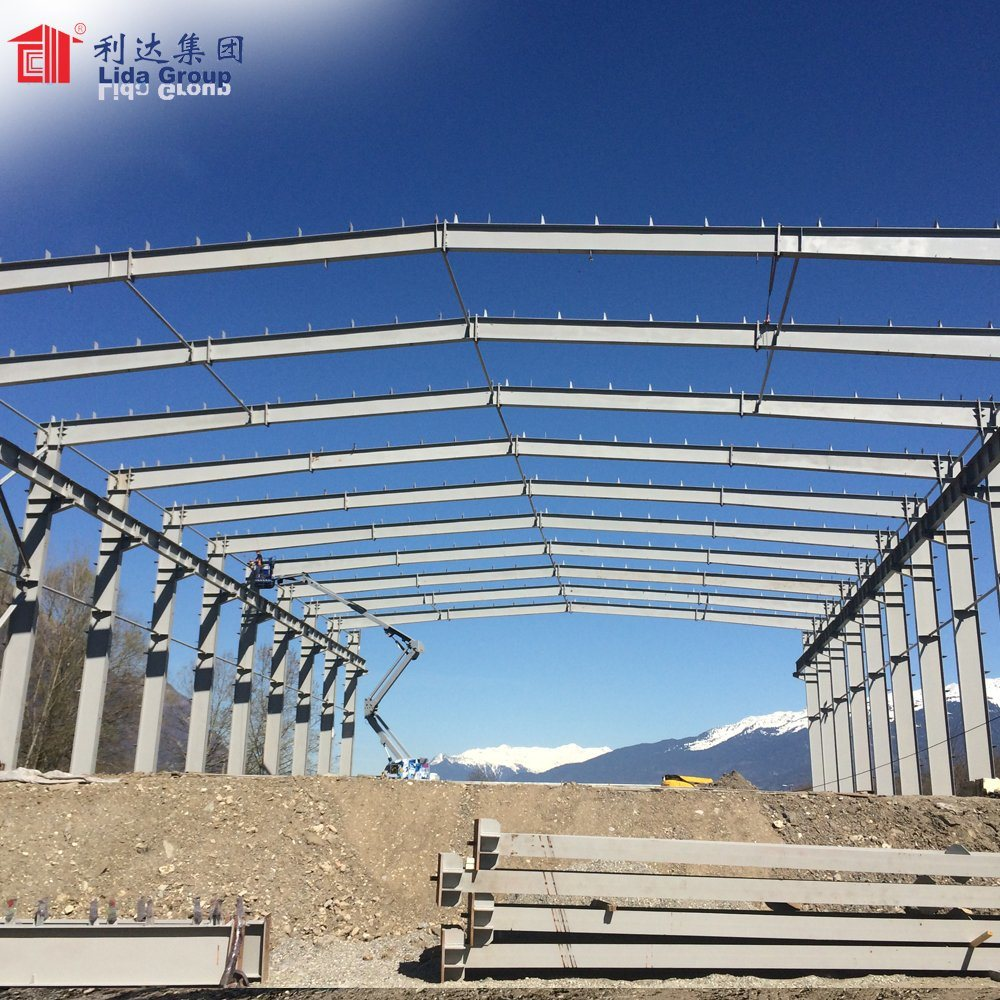
The Rising Popularity of Steel Structures in Agriculture

Lida Group: An Overview Company Background and Reputation
Range of Services and Previous Projects

The Benefits of Steel Structure Construction in the Agricultural Sector
Cost – Effectiveness
Initial Investment Analysis
At first glance, the initial investment in steel structure construction for farm storage might seem relatively high compared to some traditional building materials like wood. For example, when constructing a medium – sized steel – framed grain storage shed with a capacity of 500 tons, the upfront cost for steel materials, fabrication, and transportation could be around \(80,000 – \)100,000. In contrast, a similar – sized shed made of wood might have an initial cost of approximately \(50,000 – \)70,000. However, this cost comparison does not tell the whole story.
The cost of steel is influenced by factors such as market demand, global steel production levels, and the cost of raw materials like iron ore. In recent years, with the development of the steel industry and increased competition, the price of steel has become more stable and, in some cases, more affordable. Additionally, Lida Group, with its large – scale procurement and efficient supply chain management, can often obtain steel materials at more favorable prices, which helps to keep the initial investment in check.
Impact of Construction Speed on Cost
The construction speed of steel structures is a significant factor contributing to their cost – effectiveness. Steel structures are pre – fabricated in factories and then assembled on – site. For a typical 1000 – square – meter steel – structure agricultural storage building, the construction time can be as short as 2 – 3 months. In contrast, a similar – sized building made of traditional materials such as bricks and mortar might take 6 – 8 months to complete.
The shorter construction time means several cost – saving benefits. Firstly, it reduces the labor cost associated with a long – term construction project. Workers are needed for a shorter period, which cuts down on daily labor expenses, including wages, benefits, and any overtime costs. Secondly, it minimizes the impact on the agricultural operation. For example, if a farmer is building a new storage facility during the off – season, a quick – construction steel structure allows the farmer to start using the facility earlier, potentially enabling them to store the next harvest in the new building. This can lead to increased revenue as the farmer can better manage their produce storage and marketing.
Long – Term Maintenance Cost Advantage
Steel structures have a distinct advantage in terms of long – term maintenance costs. Wood – framed storage buildings require regular maintenance such as painting every 3 – 5 years to prevent rot and insect damage. The cost of painting a medium – sized wooden storage building can be around \(5,000 – \)10,000 every few years, depending on the size and the quality of paint used. In addition, wooden structures may need to have damaged boards replaced periodically due to rot or termite infestation, which can cost an additional \(2,000 – \)5,000 per instance.
On the other hand, steel structures require minimal maintenance. A well – coated steel building may only need occasional inspections for signs of corrosion, which can be easily addressed with touch – up painting in case of minor scratches or chips. The cost of these inspections and minor maintenance tasks is typically less than \(1,000 per year for a similar – sized steel – structure building. Over a 20 – year period, the total maintenance cost for a wooden building could be \)30,000 – \(60,000, while for a steel – structure building, it would be less than \)20,000, clearly demonstrating the long – term cost – effectiveness of steel.
Durability and Longevity
Properties of Steel Determining Durability
Steel is a highly durable material due to its inherent physical properties. It has a high strength – to – weight ratio, which means it can withstand significant loads while remaining relatively lightweight. For example, high – strength steel used in agricultural storage structures can support heavy loads of grains, hay, or equipment without deforming or collapsing.
The material also has excellent resistance to wear and tear. In an agricultural environment where storage facilities may be subject to constant use, such as the repeated loading and unloading of produce, steel structures can maintain their structural integrity over time. The smooth surface of steel also makes it less likely to accumulate dirt, debris, or moisture, which can contribute to the degradation of other materials.
Resistance to Natural Disasters
Steel structures are well – equipped to handle various natural disasters. In areas prone to strong winds, such as coastal regions or the Great Plains in the United States, steel – framed agricultural storage buildings can withstand high – velocity winds much better than traditional structures. A steel – framed barn with proper anchoring and bracing can resist wind speeds of up to 150 mph, as opposed to a wooden barn that may start to experience significant damage at wind speeds of around 80 mph.
In the event of an earthquake, steel’s flexibility and ductility allow it to absorb the energy of seismic waves without collapsing. The ability of steel to bend and deform without breaking is crucial in earthquake – prone areas, ensuring the safety of stored agricultural products and minimizing the need for costly repairs or rebuilding.
For regions that experience heavy snowfall, steel structures can bear the weight of accumulated snow. The strong framework of a steel – made grain silo, for instance, can support a large amount of snow on its roof without buckling, while a weaker – structured building may collapse under the weight of heavy snow.
Comparison with Other Materials
When compared to traditional building materials like wood and concrete, steel structures offer clear durability advantages. Wood is susceptible to rot, decay, and insect infestation. In a humid agricultural environment, wooden storage buildings can quickly deteriorate. For example, in the southern United States, where humidity levels are high, wooden barns may start to show signs of rot within 5 – 10 years if not properly maintained.
Concrete, while strong, can be prone to cracking over time due to temperature changes, moisture, and ground settlement. Cracks in concrete storage structures can lead to water infiltration, which can damage stored agricultural products. Steel, on the other hand, is not affected by these issues in the same way. It can maintain its structural integrity in a variety of environmental conditions, providing a more reliable and long – lasting solution for farm storage. With proper maintenance, a steel – structure agricultural building can have a lifespan of 50 – 70 years, compared to 20 – 30 years for a well – maintained wooden building and 30 – 50 years for a concrete – based structure.
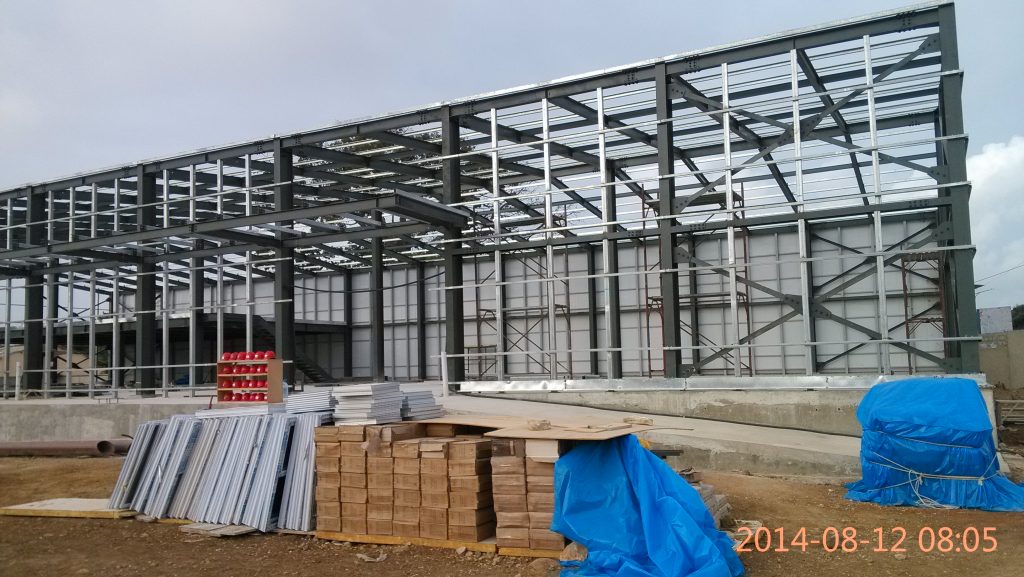
Design Flexibility
Customization to Meet Diverse Agricultural Storage Needs
Steel structures offer unparalleled design flexibility, allowing farmers and agricultural enterprises to create storage solutions tailored to their specific requirements. For height, steel – framed storage buildings can be designed to have a wide range of clear – span heights. A high – ceilinged steel structure can be constructed to store tall agricultural equipment such as combine harvesters or large bales of hay. For example, a steel – framed implement shed can be designed with a height of 8 – 10 meters to accommodate the tallest farming machinery, while still providing sufficient space for maneuvering and storage of smaller tools.
In terms of span, steel structures can achieve large clear – spans without the need for internal supports. This is particularly beneficial for bulk storage of grains or large – scale livestock operations. A steel – framed grain storage facility can have a span of up to 30 – 50 meters, providing a large, unobstructed space for storing grains in bulk. This eliminates the need for internal columns that could interfere with the movement of storage equipment or the stacking of grain bags.
Internal Layout Adaptability
The internal layout of steel – structure agricultural buildings can be easily customized. For example, in a dairy farm’s milk storage and processing facility, the steel – framed building can be designed with separate areas for milk collection, storage tanks, and processing equipment. Partition walls can be easily installed within the steel framework to create distinct functional areas. These partition walls can be made of a variety of materials, such as insulated panels for temperature – controlled areas or lightweight metal sheets for separating different work zones.
In a fruit – storage warehouse, the internal layout can be designed to have different levels of humidity and temperature control. Shelving systems can be installed within the steel – framed structure to maximize storage space and facilitate the easy access and organization of stored fruits. The flexibility of steel allows for the installation of mezzanine floors, which can be used for additional storage or office space, further optimizing the use of the building’s interior space.
Quick Construction Time
The Process of Prefabrication and On – Site Assembly
The construction of steel – structure agricultural storage buildings begins with prefabrication in a factory setting. Lida Group, for example, uses state – of – the – art manufacturing facilities to produce steel components with high precision. In the factory, all the necessary steel beams, columns, and trusses are cut, welded, and pre – finished according to the design specifications. This prefabrication process is highly efficient and can be completed in a relatively short time, often within a few weeks for a medium – sized project.
Once the components are fabricated, they are transported to the construction site for assembly. On – site assembly is a much faster process compared to traditional construction methods. Skilled workers can quickly erect the steel framework using bolts and welds. The use of pre – drilled holes and pre – fabricated connections simplifies the assembly process. For a 500 – square – meter steel – structure greenhouse, the on – site assembly can be completed in as little as 2 – 3 weeks, depending on the complexity of the design and the availability of labor.
Benefits of Rapid Construction
The quick construction time of steel structures offers several advantages. Firstly, it reduces the exposure of the construction site to potential weather – related delays. Since the majority of the work is done in a factory environment, the prefabrication process is not affected by rain, snow, or extreme temperatures. This means that the overall construction schedule is more reliable.
Secondly, it allows farmers to start using the storage facility earlier. For example, if a farmer is building a new storage shed for the upcoming harvest season, a steel – structure building can be constructed in time to store the freshly harvested crops. This timely use of the facility can prevent losses due to lack of proper storage. It also enables farmers to plan their agricultural operations more effectively, as they can start stocking their products in the new storage facility without long – term disruptions.
Thirdly, the reduced construction time can lead to cost savings. As mentioned earlier, shorter construction periods mean lower labor costs and less impact on the agricultural operation. It also minimizes the risk of cost overruns due to unforeseen delays, making steel – structure construction a more cost – effective option in terms of both time and money.
Resistance to Environmental Factors
Moisture Resistance
In agricultural storage, moisture can be a major problem as it can cause spoilage of stored products. Steel structures are highly resistant to moisture compared to many other materials. When properly coated with anti – corrosion paint or a galvanized finish, steel can withstand high – humidity environments without rusting or deteriorating.
For example, in a potato storage facility located in a humid coastal area, a steel – framed building with a good moisture – resistant coating can maintain a dry interior environment. The smooth surface of the steel also makes it easier to clean and prevent the growth of mold and mildew, which thrive in moist conditions. This helps to preserve the quality of the stored potatoes and extends their shelf – life.
Insect and Pest Resistance
Steel structures are not attractive to insects and pests, unlike wooden structures which can be easily damaged by termites, beetles, and rodents. Termites, in particular, can cause significant damage to wooden storage buildings, weakening the structural integrity over time. In a steel – framed grain storage silo, there is no risk of termite infestation, ensuring the safety of the stored grains.
The smooth and hard surface of steel also makes it difficult for pests to burrow or nest. This reduces the need for expensive pest control measures and protects the stored agricultural products from contamination and damage caused by pests.
Corrosion Resistance
Although steel is a metal, modern steel structures used in agriculture are designed to be highly corrosion – resistant. Lida Group uses advanced coating technologies to protect the steel components. Galvanized steel, which has a zinc coating, is a popular choice for agricultural storage structures. The zinc coating acts as a sacrificial layer, corroding in place of the steel when exposed to moisture and oxygen.
In addition, there are special anti – corrosion paints available that can provide an extra layer of protection. These paints are formulated to withstand the harsh environmental conditions often found in agricultural settings, such as exposure to fertilizers, pesticides, and the elements. For example, in a poultry farm where the storage building may be exposed to ammonia from chicken manure, a properly coated steel structure can resist corrosion and maintain its structural integrity for many years.
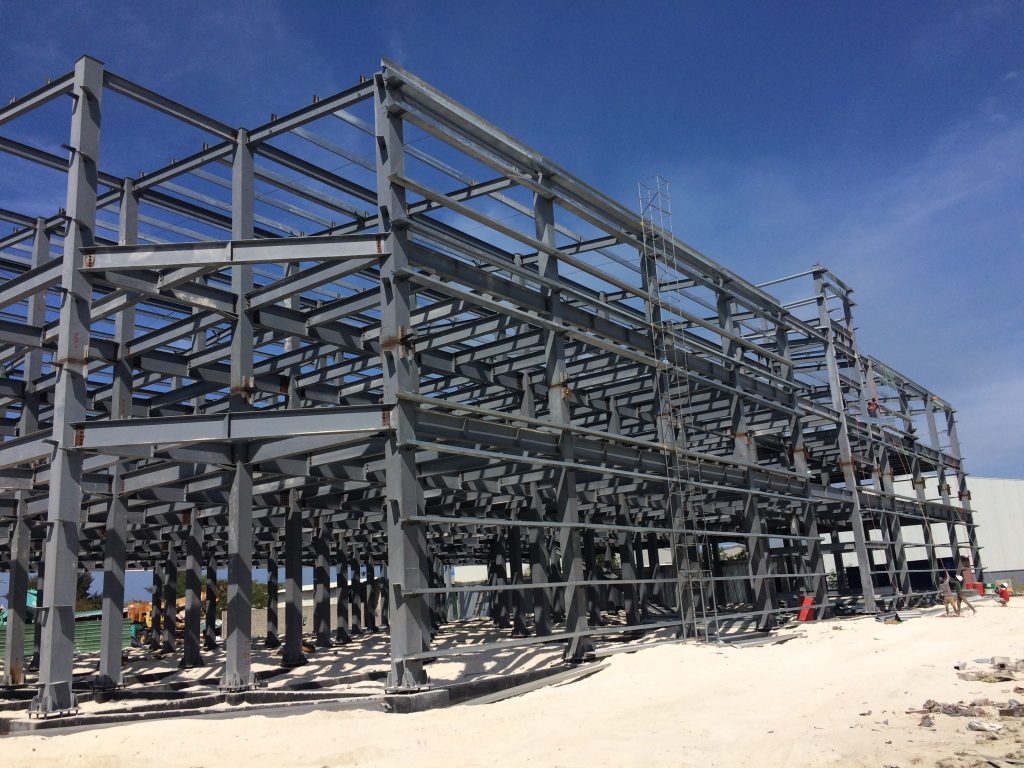
Transforming Agricultural Storage with Lida Group’s Steel Structures
Custom – Designed Storage Solutions
Understanding Different Agricultural Products
Each type of agricultural product has unique storage requirements. Grains, for example, need to be stored in a dry and well – ventilated environment to prevent mold growth and maintain their quality. Lida Group’s design team conducts in – depth research on the specific characteristics of grains such as wheat, corn, and rice. They consider factors like the moisture content of the grains at harvest time, their susceptibility to pests, and the ideal temperature and humidity conditions for long – term storage.
For fruits and vegetables, the storage requirements are even more diverse. Apples, which have a relatively long shelf – life compared to some other fruits, still need to be stored at a specific temperature (around 0 – 4°C) and humidity level (about 90 – 95%) to slow down the ripening process and prevent decay. Lida Group takes these factors into account when designing storage facilities for fruits and vegetables. They may design storage units with adjustable temperature and humidity control systems, as well as proper ventilation to remove ethylene gas, which is produced by fruits and can accelerate the ripening of neighboring produce.
Tailoring Designs to Storage Needs
In terms of storage capacity, Lida Group offers a wide range of options. For small – scale farmers who may only need to store a few tons of produce, they can design compact, modular storage units that can be easily expanded in the future as the farm grows. These modular units can be stacked or connected together, providing flexibility in storage space.
For large – scale agricultural enterprises with high – volume storage requirements, Lida Group can design and construct large – scale storage facilities such as multi – story grain silos or vast fruit and vegetable warehouses. In a large – scale grain storage project for a commercial farm, Lida Group designed a series of interconnected steel – framed silos with a total capacity of 50,000 tons. The silos were equipped with advanced loading and unloading systems, as well as automated monitoring of temperature and humidity to ensure the quality of the stored grains.
The shape and layout of the storage facilities are also customized. For example, in a vineyard where grapes need to be stored in a way that allows for easy access and sorting, Lida Group designed a storage building with a layout that includes separate areas for different grape varieties, as well as dedicated spaces for equipment storage and processing. The building’s shape was optimized to maximize the use of the available land area while providing a functional and efficient storage environment.
Integration of Advanced Technologies
Intelligent Ventilation Systems
Lida Group incorporates intelligent ventilation systems into its steel – structure agricultural storage facilities. These systems use sensors to monitor the internal environment of the storage building, including temperature, humidity, and air quality. For example, in a hay storage barn, the intelligent ventilation system can detect when the humidity inside the barn is rising due to moisture in the hay. Once the humidity reaches a certain threshold, the system automatically activates the ventilation fans to expel the moist air and bring in fresh, dry air from outside.
The ventilation systems are also designed to be energy – efficient. They can adjust the speed of the fans based on the actual needs of the storage environment, reducing energy consumption. In addition, some ventilation systems are equipped with air – filtering mechanisms to prevent dust, pests, and other contaminants from entering the storage facility, further protecting the stored agricultural products.
Temperature and Humidity Control Technologies
To maintain the optimal temperature and humidity conditions for different agricultural products, Lida Group uses advanced climate – control technologies. In cold – storage facilities for fruits and vegetables, they install high – efficiency refrigeration units. These units can precisely control the temperature within a narrow range, ensuring that the fruits and vegetables remain fresh for an extended period. For example, in a strawberry storage facility, the temperature is maintained at around 1 – 2°C, and the humidity is kept at 90 – 95% to prevent the strawberries from shriveling or rotting.
Humidity control is also crucial. Lida Group uses dehumidifiers and humidifiers in combination with the ventilation systems to regulate the humidity levels. In a grain storage silo, if the humidity is too high, the dehumidifier will remove the excess moisture to prevent mold growth. Conversely, in some cases where the air is too dry, a humidifier may be used to add a small amount of moisture to the air to prevent the grains from becoming overly dry and brittle.
Automated Monitoring and Management Systems
Lida Group’s steel – structure storage facilities are often equipped with automated monitoring and management systems. These systems use sensors and data – collection devices to continuously monitor various parameters of the storage environment, such as temperature, humidity, and the level of stored products. The data is then transmitted in real – time to a central control station or a mobile application that farmers or facility managers can access.
For example, a farmer can use a mobile app to check the temperature and humidity inside the grain storage silo while away from the farm. If there are any abnormal readings, the system can send out alerts via text message or email. This allows for timely intervention, such as adjusting the ventilation or climate – control systems, to prevent damage to the stored products. In addition, the automated monitoring system can also track the inventory levels of the stored products, helping farmers to manage their stock more efficiently and plan for future harvests and sales.
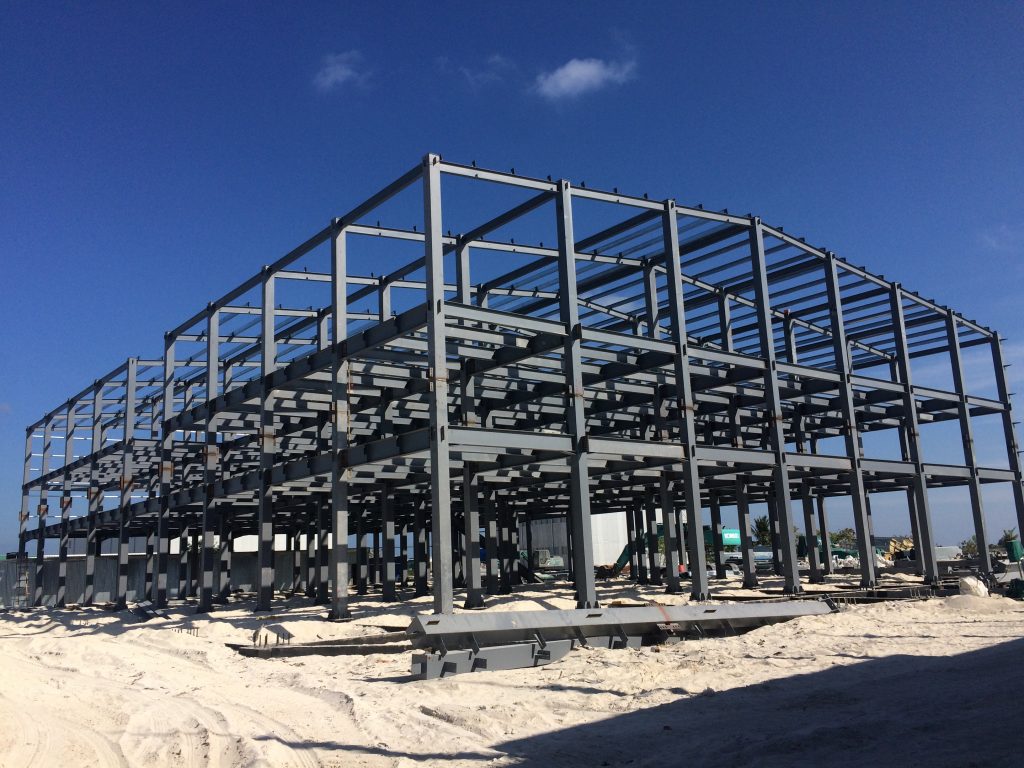
Case Studies of Successful Implementations
Case Study 1: A Large – Scale Grain Storage Project in Australia
Project Background: A large – scale agricultural enterprise in Australia was facing challenges in storing its increasing grain harvest. The existing storage facilities were outdated and could not meet the growing needs in terms of capacity, quality preservation, and efficiency. The enterprise needed a modern, reliable, and cost – effective storage solution to handle its large – volume grain production.
Challenges: One of the main challenges was the need to store different types of grains (wheat, barley, and canola) separately while ensuring optimal storage conditions for each. The region also experienced extreme weather conditions, including high – temperature summers and heavy rainfall during the wet season, which posed a threat to the stored grains.
Solution: Lida Group designed and constructed a series of large – capacity steel – framed grain silos. Each silo was customized to store a specific type of grain. The silos were equipped with advanced temperature and humidity control systems, including automated ventilation fans and cooling units. To protect against the extreme weather, the steel structures were designed with high – strength materials and proper insulation. The roofs were sloped to prevent water accumulation, and the walls were coated with a special anti – corrosion paint to withstand the humid environment.
Results: The new storage facilities have been highly successful. The capacity of the storage system has increased significantly, allowing the enterprise to handle its growing grain production. The advanced climate – control systems have effectively maintained the quality of the stored grains, reducing spoilage and losses. The automated monitoring system has made it easier for the enterprise to manage the storage facilities, saving time and labor costs. Since the implementation of the new storage system, the enterprise has seen an increase in its overall profitability due to better – preserved grains and more efficient storage management.
Case Study 2: A Fruit – Storage Warehouse in South Africa
Project Background: A fruit – growing company in South Africa specialized in exporting fresh fruits, such as mangoes, avocados, and citrus fruits. They needed a state – of – the – art storage warehouse to preserve the quality of their fruits during the storage and pre – shipment periods. The company aimed to meet the strict quality standards required by international markets.
Challenges: The main challenge was to create a storage environment that could mimic the natural growing conditions of the fruits as closely as possible. Different fruits have different temperature, humidity, and ventilation requirements, and the warehouse needed to be able to accommodate these variations. In addition, the company required a storage solution that could be easily expanded in the future as their business grew.
Solution: Lida Group designed a multi – chamber steel – structure fruit – storage warehouse. Each chamber was equipped with independent temperature and humidity control systems, allowing for the customized storage of different fruits. The warehouse also had a sophisticated ventilation system that could remove ethylene gas, which is produced by fruits and can accelerate ripening. The modular design of the steel structure made it easy to expand the warehouse in the future. Lida Group also installed an automated inventory management system to track the movement of fruits in and out of the warehouse.
Results: The new fruit – storage warehouse has been a game – changer for the company. The quality of the stored fruits has been significantly improved, leading to a higher percentage of export – quality fruits. The ability to store different fruits in optimal conditions has reduced losses due to spoilage. The expandability of the warehouse has allowed the company to plan for future growth without having to worry about limited storage space. The automated inventory management system has improved the efficiency of the company’s operations, reducing errors and saving time. As a result, the company has been able to increase its market share in the international fruit – export market and improve its overall competitiveness.
Case Study 3: A Livestock Feed Storage Facility in the United States
Project Background: A large – scale livestock farm in the United States needed a reliable storage facility for its livestock feed. The existing storage system was prone to damage from pests and moisture, leading to the spoilage of a significant amount of feed. The farm wanted a durable and cost – effective solution to store its large – volume feed requirements.
Challenges: The main challenges were to protect the feed from pests, such as rodents and insects, and to prevent moisture absorption, which could cause the feed to mold and lose its nutritional value. The farm also required a storage solution that could be easily accessed for regular feed distribution to the livestock.
Solution: Lida Group designed a steel – framed feed – storage building with a tight – fitting structure to prevent pests from entering. The building was equipped with a raised floor system to keep the feed off the ground and prevent moisture absorption. The walls and roof were made of galvanized steel, which is highly resistant to corrosion and moisture. Lida Group also installed a ventilation system to keep the air inside the building dry and fresh. In addition, the storage building was designed with large – scale doors and a conveyor system for easy loading and unloading of the feed.
Results: The new feed – storage facility has been highly effective. The incidence of pest infestation has been greatly reduced, and the feed has remained in good condition for a longer period. The improved storage conditions have led to a decrease in feed spoilage, saving the farm significant costs. The easy – access design of the storage building has made it more convenient for the farm workers to distribute the feed to the livestock, improving the overall efficiency of the farm’s operations. The durability of the steel – structure building has also provided long – term value, as it requires minimal maintenance and is expected to last for many years.
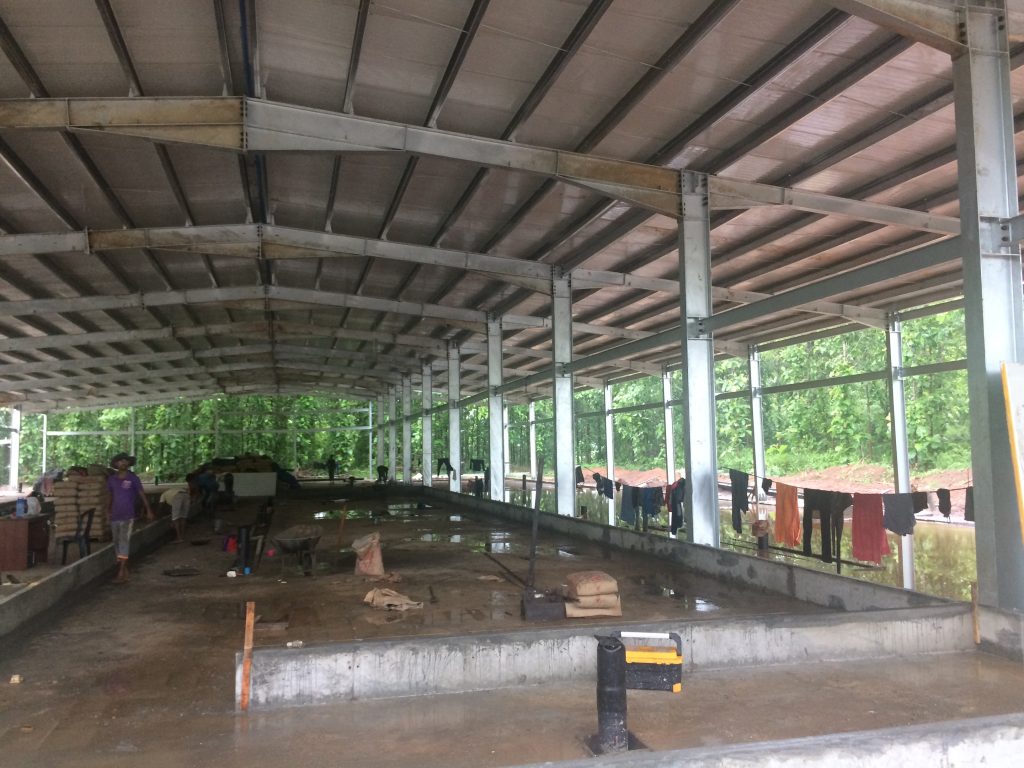
Cost – Benefit Analysis
Initial Investment vs Long – Term Savings
Analysis of Initial Investment
The initial investment in Lida Group’s steel – structure farm storage facilities is often a point of consideration for farmers. For a standard 200 – square – meter steel – framed fruit storage shed, the initial cost can range from \(30,000 – \)40,000. This cost includes the price of high – quality steel materials, which are carefully selected to ensure durability and structural integrity. The cost of prefabrication in the factory, where the steel components are precisely cut, welded, and finished, is also factored in. Additionally, transportation costs to deliver the prefabricated components to the construction site and the initial labor cost for on – site assembly contribute to the overall initial investment.
When compared to alternative storage solutions, such as traditional brick – and – mortar structures, the upfront cost of steel structures may seem relatively high. A similar – sized brick – and – mortar storage shed might have an initial cost of around \(25,000 – \)35,000. However, this comparison fails to account for the long – term cost implications of each option.
Long – Term Savings in Maintenance
One of the most significant long – term savings with steel – structure storage facilities is in maintenance costs. Steel structures require minimal maintenance compared to other materials. For example, a steel – framed grain storage bin only needs occasional inspections for signs of corrosion or damage. If any minor scratches or chips in the protective coating are detected, they can be easily repaired with touch – up painting. The annual cost of these maintenance tasks is typically less than $500 for a medium – sized bin.
In contrast, a wooden grain storage bin requires much more frequent maintenance. Wooden structures are prone to rot, especially in humid agricultural environments. They need to be treated with preservatives regularly, which can cost around \(1,000 – \)2,000 per year for a similar – sized bin. Additionally, wooden bins may need to have damaged planks replaced every few years, at a cost of approximately \(2,000 – \)3,000 per instance. Over a 20 – year period, the total maintenance cost for a wooden bin could be \(40,000 – \)60,000, while for a steel – structure bin, it would be less than $10,000.
Operational Cost Savings
Steel – structure storage facilities also offer savings in operational costs. Their energy – efficient design, such as proper insulation and ventilation systems, can lead to reduced energy consumption. In a steel – framed cold – storage facility for vegetables, the advanced insulation materials used in the walls and roof can help maintain a stable low – temperature environment with less energy input. This can result in an annual energy cost savings of 20% – 30% compared to a less – efficiently designed storage facility.
The quick construction time of steel structures also has an impact on operational costs. Since the construction process is shorter, farmers can start using the storage facility earlier. This means they can store their produce sooner, reducing the risk of spoilage and potential losses. For example, if a farmer can start using a new storage facility a month earlier than with a slower – constructed alternative, they may be able to store a larger portion of their harvest, leading to increased revenue and reduced losses.
Return on Investment (ROI) Projections
Factors Affecting ROI
Reducing product losses is a major factor contributing to a positive ROI for Lida Group’s steel – structure storage facilities. In a fruit – storage scenario, the advanced climate – control systems in steel – framed warehouses can significantly extend the shelf – life of fruits. For instance, strawberries stored in a well – designed steel – structure cold – storage facility with precise temperature and humidity control can have their shelf – life extended by 5 – 7 days compared to storage in a less – suitable environment. This reduction in spoilage means that farmers can sell a higher percentage of their harvested strawberries, increasing their revenue.
The improved efficiency of storage operations also plays a crucial role. In a large – scale grain storage facility with a steel – structure design, the use of automated loading and unloading systems, which are more easily integrated into the steel – framed structure, can speed up the handling of grains. Workers can load and unload grains much faster, reducing labor time and costs. For example, in a traditional grain storage facility, it may take a team of workers several days to unload a large shipment of grains. In a steel – structure facility with automated systems, the same task can be completed in a day or two, saving on labor costs and allowing for more efficient use of the workforce.
ROI Calculation Examples
Consider a medium – sized dairy farm that invests \(50,000 in a steel – structure milk storage and processing facility from Lida Group. Before the installation of the new facility, the farm was losing approximately \)10,000 worth of milk each year due to spoilage and inefficient storage. After the implementation of the new steel – structure facility, which is equipped with advanced temperature and humidity control systems, the annual loss of milk is reduced to \(2,000. Additionally, the improved efficiency of the storage and processing operations allows the farm to increase its production and sales by \)5,000 per year.
The annual net gain for the farm is (\(10,000 – \)2,000)+\(5,000 = \)13,000. Using the simple ROI formula: ROI = (Net Gain / Initial Investment)×100%, the ROI for the first year is (\(13,000 / \)50,000)×100% = 26%. Over a 5 – year period, assuming the net gain remains relatively stable, the total net gain would be \(13,000×5 = \)65,000. The ROI over 5 years would be ((\(65,000 – \)50,000)/$50,000)×100% = 30%.
In another example, a vegetable – growing farm invests \(80,000 in a steel – structure greenhouse for year – round production and storage. The greenhouse is equipped with intelligent ventilation and climate – control systems. Before the installation, the farm was limited to seasonal production and faced challenges in storing excess produce. With the new greenhouse, the farm can now produce and sell vegetables throughout the year, increasing its annual revenue by \)30,000. The cost of operating the greenhouse, including energy and maintenance, is \(5,000 per year. The annual net gain is \)30,000 – \(5,000 = \)25,000. The ROI for the first year is (\(25,000 / \)80,000)×100%≈31.25%. As the greenhouse has a long lifespan and the revenue – increasing effect is expected to continue, the long – term ROI is projected to be even higher, making the investment in the steel – structure greenhouse a highly profitable decision for the farm.
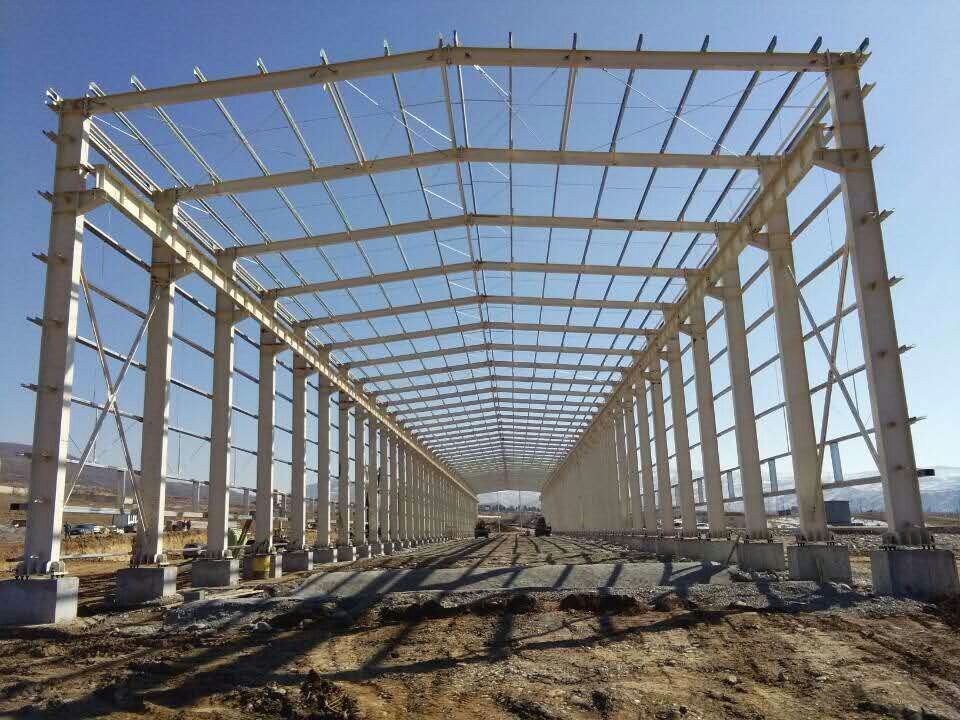
Durability Features of Lida Group’s Steel Structures
High – Quality Materials Used
Construction Techniques for Long – Lasting Structures

Warranty and After – Sales Support
Challenges and Solutions in Implementing Steel Structure Storage
Initial Cost Concerns
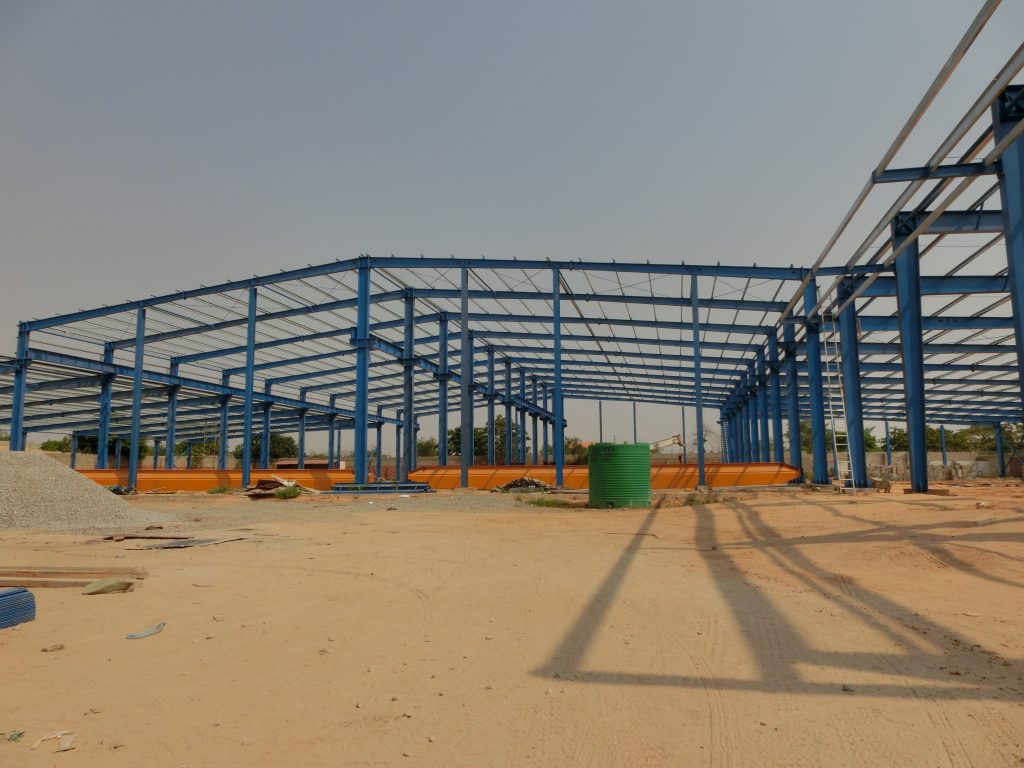
Technical Installation Requirements
Regulatory and Permitting Hurdles

Conclusion
Future Trends in Agricultural Steel Structure Storage
Technological Advancements
Intelligent Monitoring and Management
In the future, agricultural steel – structure storage will witness a significant leap in intelligent monitoring capabilities. With the continuous development of the Internet of Things (IoT) technology, more and more sensors will be integrated into steel – structure storage facilities. These sensors will be able to monitor a wide range of parameters in real – time, including the quality of stored agricultural products. For example, in a fruit – storage warehouse, sensors will not only monitor temperature and humidity but also detect the ripeness of fruits by measuring the ethylene gas concentration. This real – time data will be transmitted to a central control system, which can then make automatic adjustments to the storage environment.
Machine learning and artificial intelligence algorithms will play a crucial role in analyzing the vast amount of data collected from these sensors. They will be able to predict potential issues such as spoilage, pest infestation, or equipment failure in advance. For instance, by analyzing historical data on temperature, humidity, and pest occurrence in a grain storage silo, an AI – based system can predict when and where a pest infestation is likely to occur. This allows farmers to take preventive measures, such as applying pesticides or adjusting the ventilation system, well in advance, reducing losses and improving the overall efficiency of the storage operation.
New Material Applications
The future will see the emergence and application of new steel – related materials in agricultural storage. Nanocomposite steels, for example, are expected to gain more prominence. These materials combine the strength of steel with the unique properties of nanomaterials. Nanocomposite steels can have enhanced corrosion resistance, higher strength – to – weight ratios, and improved fatigue resistance. In an agricultural environment where storage facilities are exposed to harsh conditions, such as high humidity and corrosive chemicals, nanocomposite steels can significantly extend the lifespan of the storage structures.
Another area of development is the use of self – healing materials in steel structures. Self – healing coatings for steel can automatically repair minor scratches or cracks that occur over time due to wear and tear or environmental factors. These coatings contain microcapsules filled with healing agents. When a crack or scratch forms, the microcapsules rupture, releasing the healing agent, which then fills the defect and restores the integrity of the coating and the underlying steel structure. This technology can reduce maintenance costs and improve the durability of agricultural steel – structure storage facilities.
Sustainability and Environmental Considerations
The Significance of Sustainability in Agricultural Storage
Sustainability has become a crucial aspect of modern agriculture, and agricultural storage is no exception. In the context of global climate change and increasing environmental awareness, sustainable storage practices are essential for reducing the carbon footprint of the agricultural sector. Sustainable storage facilities can contribute to energy conservation, waste reduction, and the protection of natural resources.
For example, energy – efficient storage buildings can reduce the amount of energy required to maintain optimal storage conditions. This not only helps in reducing greenhouse gas emissions but also saves on energy costs for farmers. In addition, sustainable storage practices can minimize the use of harmful chemicals, such as pesticides and preservatives, by creating a more natural and healthy storage environment for agricultural products. This is beneficial for both the environment and the health of consumers.
Lida Group’s Current and Future Environmental Initiatives
Currently, Lida Group is already taking several steps towards environmental sustainability in its steel – structure storage solutions. In terms of materials, the company is increasingly using recycled steel in its construction projects. Recycled steel production requires less energy compared to virgin steel production, reducing the overall energy consumption and carbon emissions associated with the manufacturing process. For example, in a recent agricultural storage project, Lida Group used 30% recycled steel in the construction of a large – scale grain storage facility. This not only contributed to environmental conservation but also demonstrated the company’s commitment to sustainable development.
Lida Group is also focusing on energy – efficient design in its steel – structure storage buildings. The company incorporates features such as natural ventilation systems, energy – efficient insulation materials, and the use of energy – saving equipment. In a fruit – storage warehouse, Lida Group designed a natural ventilation system that takes advantage of the local wind patterns and temperature differentials to circulate air inside the building, reducing the need for mechanical ventilation and thus saving energy.
Looking to the future, Lida Group plans to further expand its environmental initiatives. The company aims to increase the proportion of recycled steel used in its projects to 50% within the next five years. It also intends to invest in research and development to explore new, more sustainable construction materials and techniques. For example, Lida Group is researching the use of bio – based coatings for steel structures, which are not only environmentally friendly but also offer good corrosion – protection properties. In addition, the company plans to develop more advanced energy – management systems for its storage facilities, such as integrating solar panels into the roof design of steel – framed buildings to generate renewable energy for powering the storage operations.
Conclusion
Recap of Key Points
The Promising Future of Lida Group in Transforming Agriculture
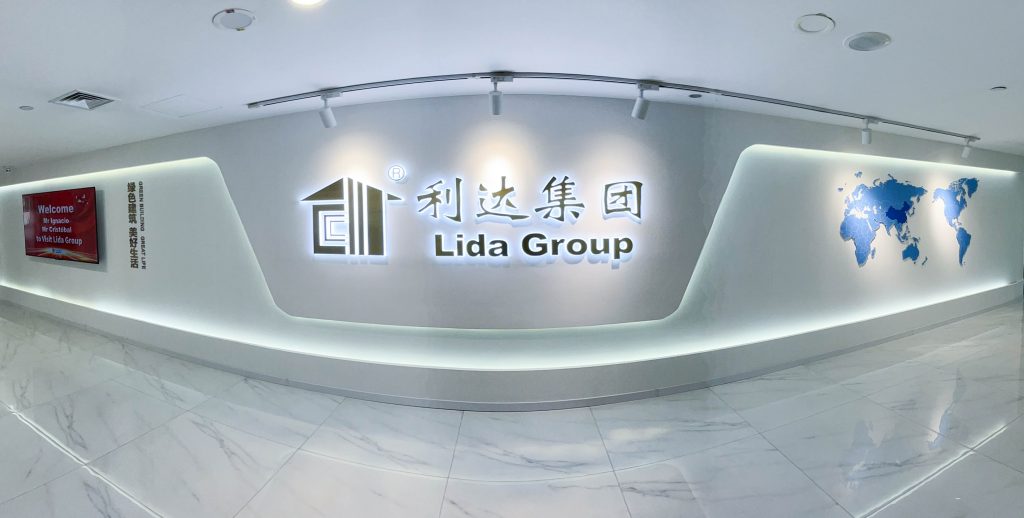
Related news
-
Lida Group Integrates Smart Technologies into Its High Quality Metal Buildings While Maintaining a Cost-Effective Approach
2025-10-28 16:57:22
-
Cost-Effective Expansion for Growing Businesses: Lida Group's Free Design Service for Steel Frame Warehouses and Factories
2025-10-29 14:33:24
-
Engineered for Speed and Value: Lida Group's High Quality Metal Buildings Use a Cost-Effective Construction Model
2025-10-29 14:37:06
contact us
- Tel: +86-532-88966982
- Whatsapp: +86-13793209022
- E-mail: sales@lidajituan.com


